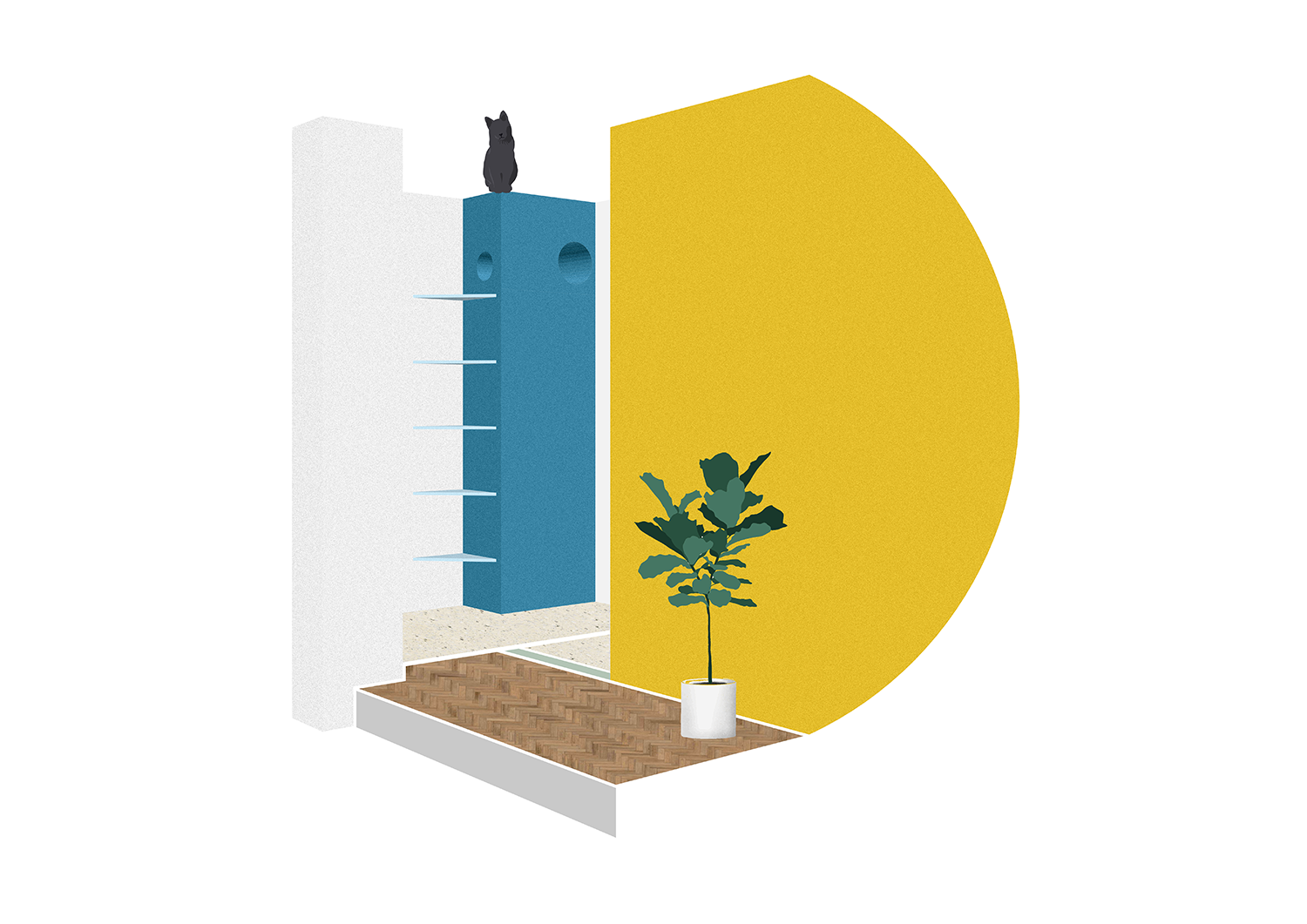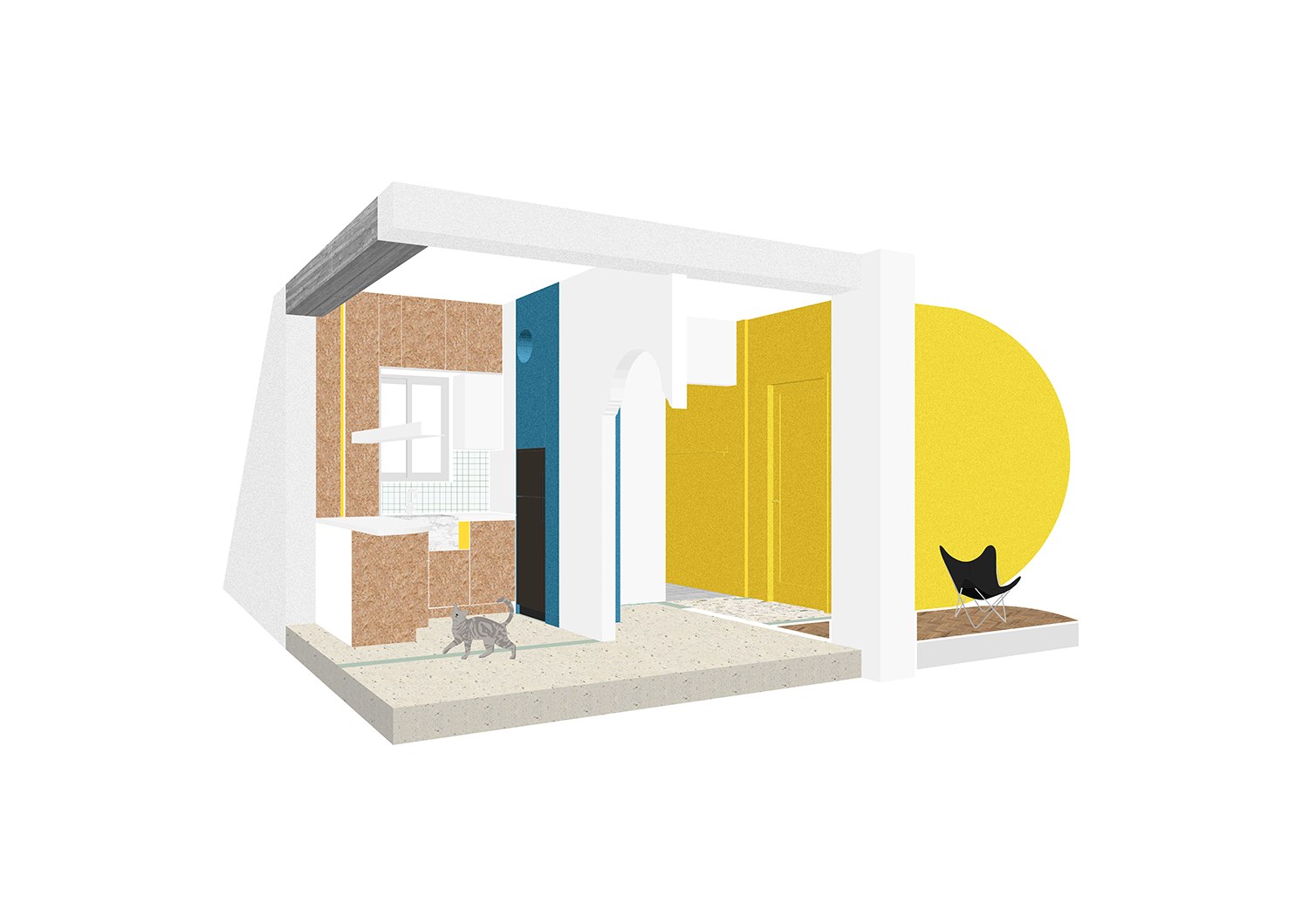Within the material presence of this Athenian apartment, architecture enters into dialogue with memory and movement. Its name, inspired by the great traveller Ibn Battuta, is shared with a resident cat, turning the home into a terrain of exploration—for both humans and animals.
The renovation reveals the honesty of construction: stone, brick, and concrete remain exposed, engaging in conversation with carefully inserted gestures. OSB cabinetry, marble countertops, and white tiles form a tactile ensemble. These surfaces recount the building’s story, now rethreaded through thoughtful interventions.
The kitchen, a luminous recess in the plan, is shaped with OSB cabinetry and a white marble worktop. A hand-carved marble sink becomes a sensory anchor. Though modest in size, the space feels generous through precise alignments and curved details. The rounded edge of the counter softens the functional zone, inviting open and informal use.
In the bathroom, the stone walls remain untouched, bearing the traces of age. Mirror, lighting, and plumbing elements are composed with precision, serving as subtle accents. A fixed glass surface, discreetly revealing the shower, adds depth and quiet tension.
Each intervention follows the logic of the materials. Joints, screws, and corners remain visible, revealing a poetics of construction. The atmosphere remains intimate and open, material and composed—a dwelling that respects imperfection and crafted intent.
The most tender gesture lies in the circular perforations carved into furniture and doors—pathways at cat height, designed for Battuta the cat. Architecture here becomes multispecies; it serves more than human needs and fosters a quiet, playful coexistence.


